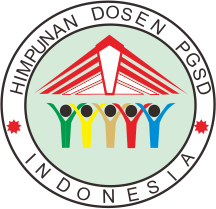IMPLEMENTASI MODEL QUANTUM TEACHING UNTUK MENINGKATKAN HASIL BELAJAR PKn SISWA KELAS III SDN 015 TANDUN KECAMATAN TANDUN KABUPATEN ROKAN HULU
DOI:
https://doi.org/10.30595/dinamika.v11i1.5978Keywords:
Model Quantum Teaching, Hasil Belajar PKnAbstract
Civics learning at school is an easy and fun lesson when a teacher is able to aplly a model that attracts students to learn. But in reality so far there are still many teachers who use conventional learning models so that learning becomes boring and students do not participate in the learning process which results in low student learning outcomes. This study aims to determine the differences in PKn learning outcomes before and after implementing the Quantum Teaching model. The type of research used in this study is quantitative research with experimental methods. The form of this study was pre-experimental (non-design) ukwith one-group pretest-posttest design. This research was conducted in class III of SDN 015 Tandun, Tandun District, Rokan Hulu Regency, which amounted to 20 students. Based on the results of the study obtained an average pretest that is equal to 39.75. while the posttest average is 70.25. The average N-Gain value is 0.52 with moderate interpretation. The results of the t test are obtained that the tcount score is greater than t table or 58.08> 2.0930. This is in accordance with the Reject H0 criteria, if thitung> t table. This proves that there are significant differences in PKn learning outcomes of grade 3 students of SDN 015 Tandun between before implementing the quantum teaching model and after implementing the quantum teaching model.References
Daryanto dan Rahardjo, Mulyo. 2012. Model Pembelajaran Inovatif. Yogyakarta. Gava Media
DePorter, Bobbi. et all (Terjemahan Ary Nilandari). (2010). Quantum Teaching Mempraktikkan Quantum Learning di Ruang-Ruang Kelas. Kaifa. Bandung.
Khodijah, Nyayu. 2014. Psikologi Pendidikan. Jakarta. PT Rajagrafindo Persada
L, Marleny dan Ernawati, Yulian. 2013. Penerapan Pendekatan Quantum Teaching untuk Meningkatkan Hasil Belajar Siswa Kelas V Min 1 Batu Merah Ambon. FMIPA Universitas Patimura. (Online). https://www.researchgate.net/publication/319150692 . (Diakses 7 oktober 2018).
Sardiman. 2011. Interaksi dan Motivasi Belajar Mengajar. Jakarta. PT Rajagrafindo Persada
Sugiyono.2013. Metode Penelitian Kuantitatif Kualitatif dan R&D.Alfabeta. Bandung.
Sundayana, Rostina. 2014. Statistika Penelitian Pendidikan. Alfabeta. Bandung
Supardi U.S. 2013. Aplikasi statistika dalam penelitian. Change publication. Jakarta.
Syukur, Muhammad, dkk. 2014. Pengaruh Model Pembelajaran Quantum Teaching Terhadap Hasil Belajar Siswa SD. Jurnal Universitas Tanjung Pura.(Online).3(9).http://jurnal.untan.ac.id/index.php/jpdpb/article/view/6114/7132. (Diakses 7 Oktober 2018).
Winataputra, Udin S. dkk. 2014. Pembelajaran PKn di SD. Universitas Terbuka.
Downloads
Published
How to Cite
Issue
Section
License
Authors who publish with this journal agree to the following terms:
Authors retain copyright and grant the journal right of first publication with the work simultaneously licensed under a Creative Commons Attribution License that allows others to share the work with an acknowledgement of the work's authorship and initial publication in this journal.
Authors are able to enter into separate, additional contractual arrangements for the non-exclusive distribution of the journal's published version of the work (e.g., post it to an institutional repository or publish it in a book), with an acknowledgement of its initial publication in this journal.
Authors are permitted and encouraged to post their work online (e.g., in institutional repositories or on their website) prior to and during the submission process, as it can lead to productive exchanges, as well as earlier and greater citation of published work (See The Effect of Open Access).

Dinamika Jurnal Ilmiah Pendidikan Dasar is licensed under a Creative Commons Attribution 4.0 International License.













